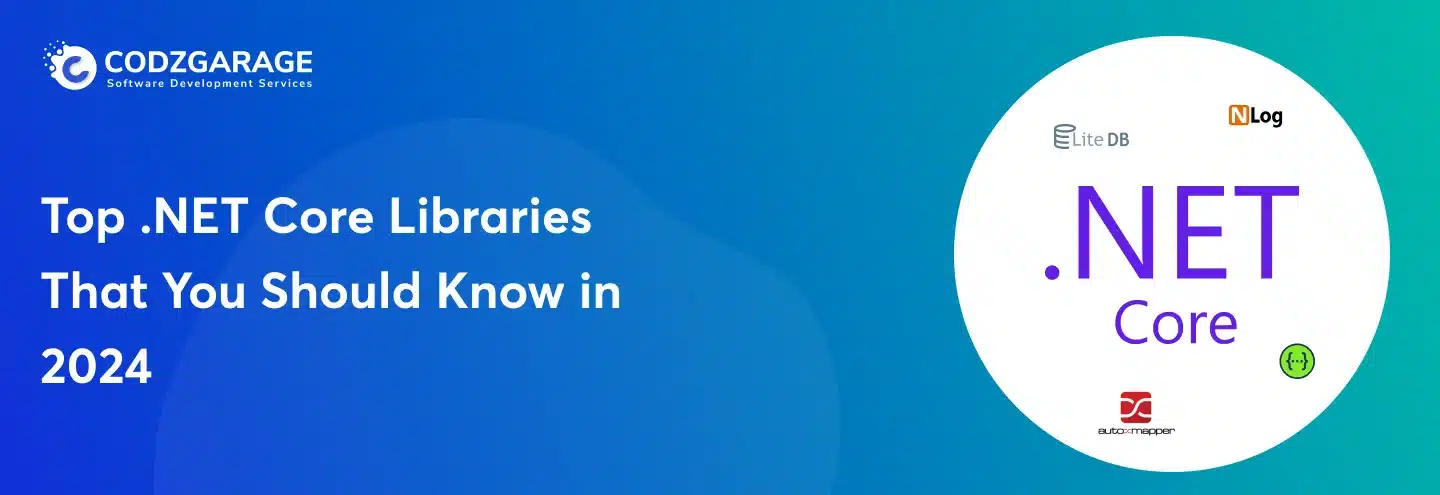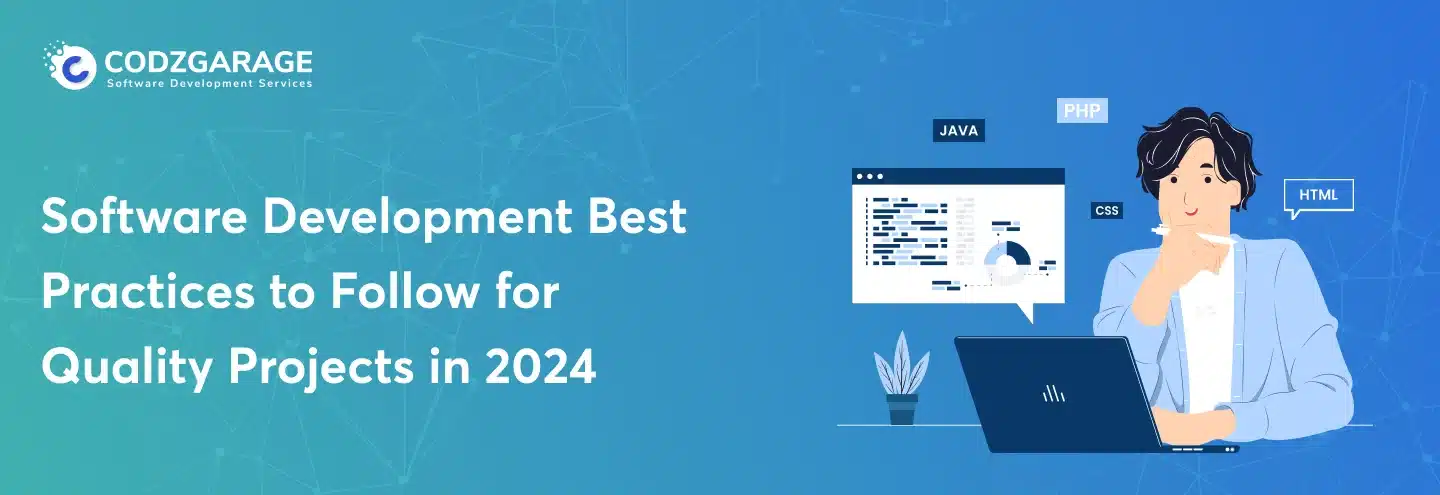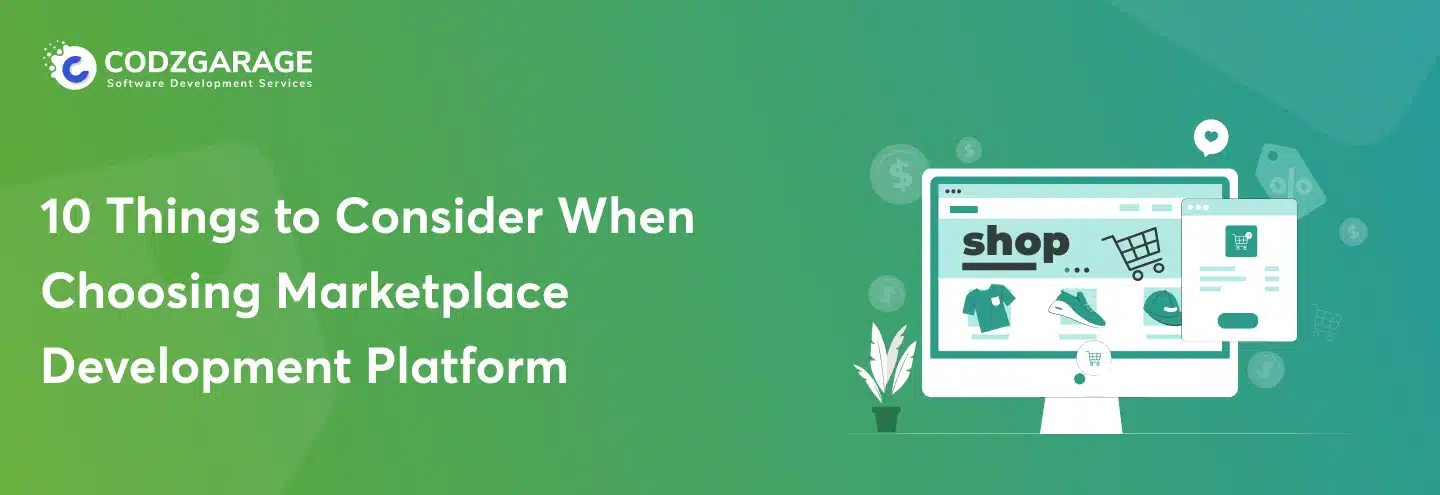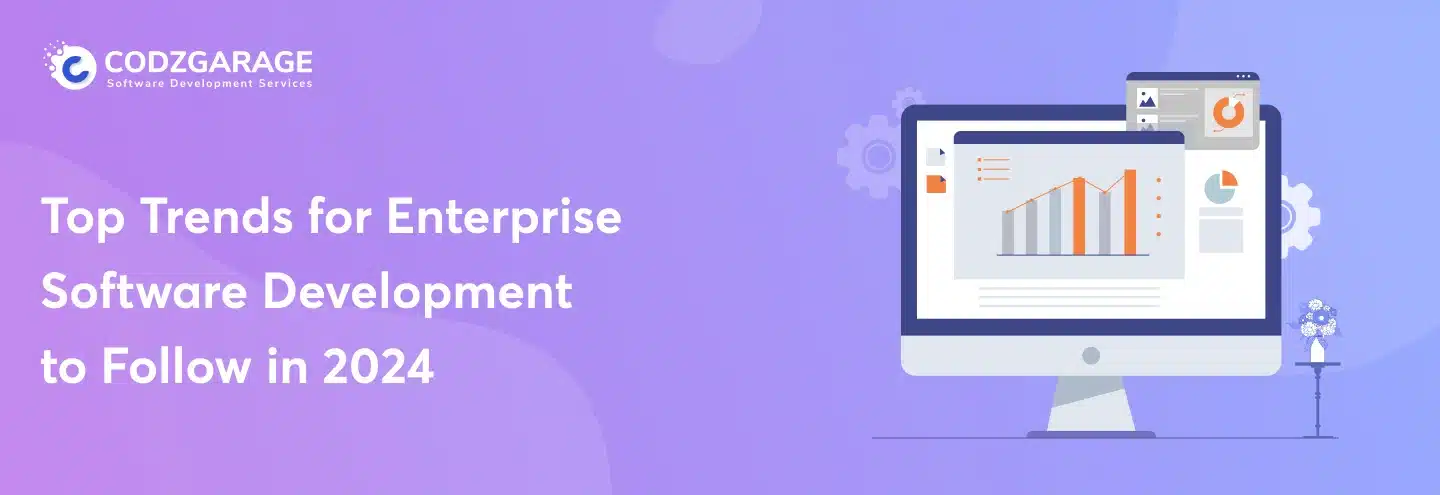Legacy Software Modernization Best Practices
Want to migrate your legacy system to newer platforms or technologies? It is a complex job, and your software migration agency must adopt the legacy software modernization best practices for better outcomes.
Software plays a significant role in organizations, irrespective of their types and size. That’s why it must align with current business and marketplace requirements. No company working with obsolete software can handle modern-day business necessities. Hence, we’ve come up with this article containing effective practices for legacy software modernization that’ll assist you in juicing up your legacy system easily.
The technologies and tools for software development aren’t static but dynamic that change frequently. The software working in your company right now may also not be that relevant in the future. Therefore 50% of companies plan to modernize their legacy system in the next two years. Modernizing a legacy system brings it in alignment with current business needs.
Codzgarage it the leading software migration company, offering a wide range of migration services, including VB6 to web migration,among many others. You can connect with usand our team for more information about migration and how it works.
You get plenty of reasons to migrate legacy software; however, there may be some temporary consequences, which may be why businesses often get afraid of modernization. But you don’t have to worry any longer– as we’ve come up with some of the best legacy application modernization practices that’ll help you modernize your legacy system with ease.
Let’s look up and down!
Legacy System Modernization: Best Practices for Seamless Transformation
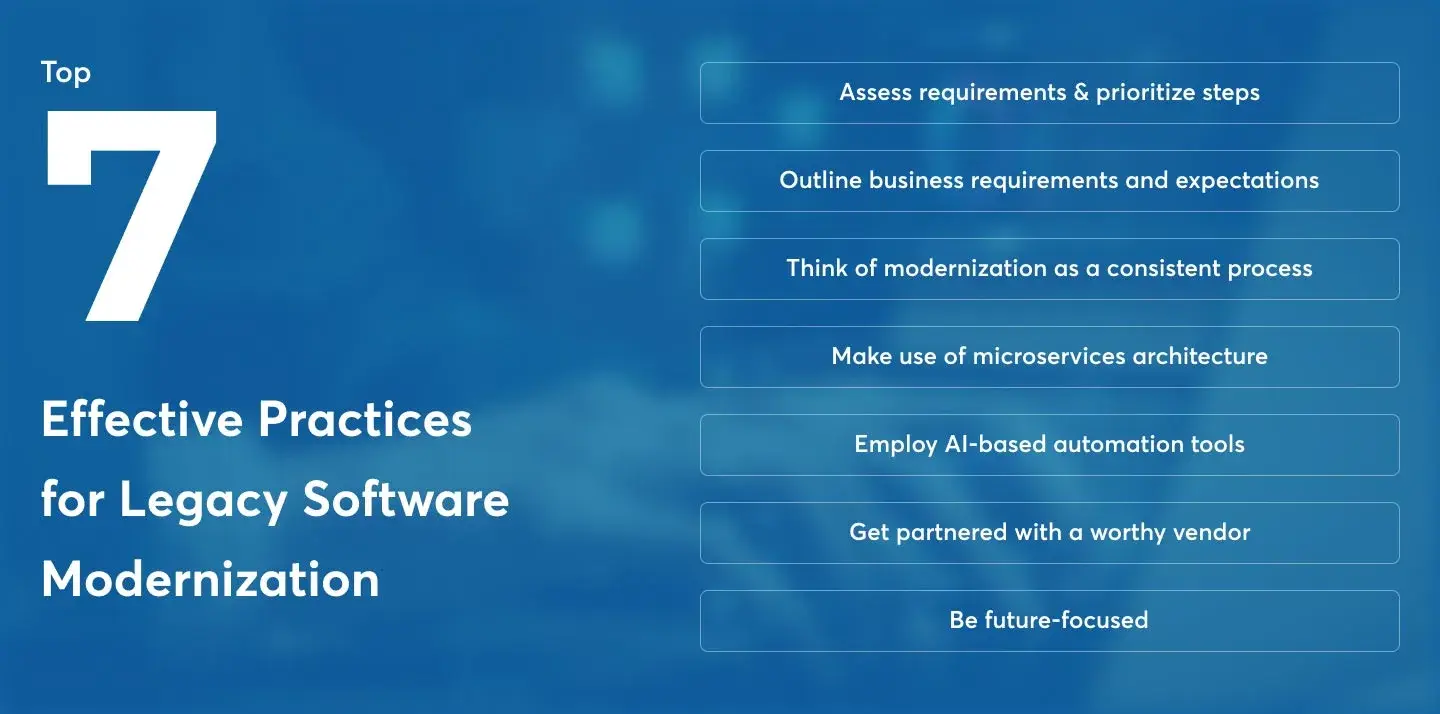
Modernization of legacy software in any organization is indeed a hefty and risky task that needs to be performed wisely. The process involves updating software by replacing outdated elements and embedding additional ones to better it, improve performance, add more features and functionalities, and strengthen security.
Below are some of the key legacy software modernization practices that you should take into consideration while modernizing your existing software to grab an astonishing result.
Assess Your Legacy Software and Prioritize Steps
Before moving any further into legacy application modernization, the first step you should follow is to perform a proper assessment of the legacy system and prioritize the steps you’re going to take. Gauge your legacy software thoroughly and pen down every concern, including the system’s architecture, limitations, and dependency, and determine the best approach to modernization.
Outline Your Business Requirements and Outcomes
“One of the best practices that must be included in every legacy software modernization project is to tackle the application modernization strategically and keep the business requirements and expected outcomes aligned,” says Paresh Kapuriya, CTO (Chief Technology Officer) at Codzgarage Infotech Private Limited.
When you have a giant project to work on, you’re more likely to wander in between the project development resulting in losing sight of your end goal. Hence, outlining your business requirements and what you expect from the project is of utmost importance. When you don’t have a canvas, you get confused about what to paint, and the same goes for software modernization.
In the absence of an outline, the chances of your getting frustrated halfway through the process are higher. That’s why defining your project requirement and outcome is important. Ask a few questions to you, like what’s the driving force for modernization? Is your existing custom software holding you back? Is it lacking crucial features? And create an outline based on the answers.
Consider Modernization as a Consistent Enhancement Process
A successful legacy application modernization doesn’t, in general, have a fixed start and end time. Software modernization is a process that goes hand in hand with technological advancements. It’s a constant attempt to align a legacy system with modern and ever-changing technological advancements along with other business trends. Therefore businesses should take legacy system modernization as a process rather than a one-time project.
Employ Microservices Architecture
Another one in the list of legacy software modernization best practices is to employ microservices architecture. It assists you in breaking down the existing monolithic structure into multiple tiny, more manageable components, enabling them to be convenient to modernize. It reduces the effort, time, and cost involved in software modernization process.
Make Use of AI-Based Automation Tools
Making use of AI-based automation tools is one of the crucial legacy system modernization approaches you should employ for an astonishing result. Automation streamlines the process of legacy system modernization and makes sure the modernized system gets tested and deployed in no time. Automotive testing and deployment tools are faster and ensure reducing the time of project accomplishment.
They own the capability to identify dead code as well as to highlight specificity to craft a code base that’s cleaner for modernization. AI-based automation tools not only mitigate the timeline but provide user-friendly tools that support practice-based strategy.
Get Partnered with a Worthy Vendor
Another significant practice for Legacy application modernization is getting connected to the right software development company to embrace quality results for modernization. The process can be both complex and time-consuming; hence getting partnered with the right vendor will come in handy. Choosing the right web development firm can help you make sure that the modernization is done efficiently at a reduced effort and time.
Be More Future-Focussed
Being focused on the future is another one of the legacy software modernization best practices. When working on modernizing a legacy system, you must be focused more on designing the system in a way that adapts to the potential business and technologies in the future so that a business bears fewer expenses and efforts on modernization.
Benefits You Embrace by Legacy Application Modernization
Modernization doesn’t replace legacy systems entirely but makes all necessary changes required for performance enhancements and brings it in line with current necessities. Look at the pointers mentioned below stating how a legacy application modernization benefits businesses.
- Enhanced Performance— Modernizing legacy applications improves the overall performance, durability, and reliability of an existing application, making them convenient to work, maintain and upgrade.
- Reduced Expense— Legacy application modernization results in mitigating support, maintenance, and development costs.
- Robust Security— Legacy software modernization adds enhanced security measures and keeps an application in compliance with the latest security standards.
- Increased Scalability— An obsolete and legacy software is likely to be tough to scale quickly, but once it gets modernized with the latest technologies, it becomes more flexible and adaptable.
- Improved User-Experience—Modernizing legacy applications does a miracle when it comes to improving the user experience. It makes a legacy application user-friendly resulting in delivering an amazing user experience.
Final Thoughts
It becomes way more challenging when your existing software gets obsolete, and you often come across challenging situations. You are more likely to encounter many challenges while performing different operations using a legacy system. Thanks to legacy software migration enables you to modernize your existing software and keep it in line with the current needs.
Modernizing a legacy application consists of a variety of functions, for instance, code refactoring, platform migration, integration, and so on. You need to be prepared in advance to get the expected result. Legacy system modernization may be complex; however, excellent execution of the above-mentioned legacy software modernization practices will come in handy and let you embrace a satisfactory result.
Looking for
Software Migration AgencyWe Help Migrate
- VB6 to web
- Desktop to web
- VB.NET to .NET Core




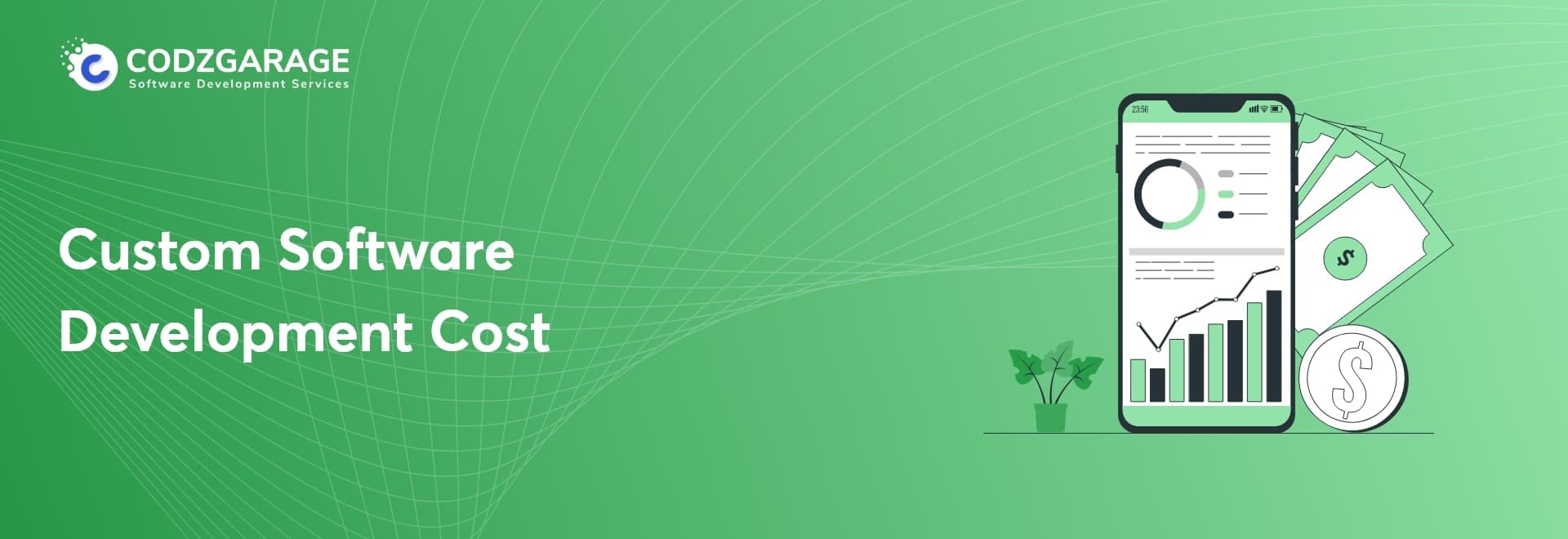
 Kevin Bhut
Kevin Bhut 